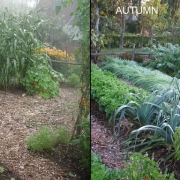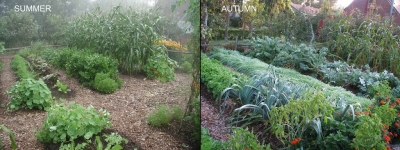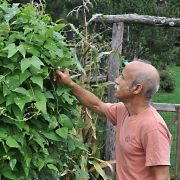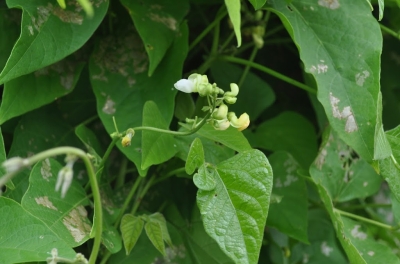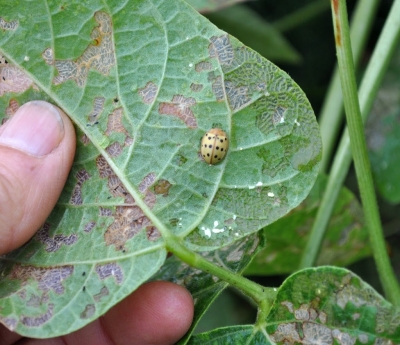Back to the Future
Time to jump into the future, again. It’s autumn of this year and tomatoes, peppers, cucumbers and other summer delicacies are on the wane. Does the vegetable garden appear melancholy and forlorn? No! It’s lush with savory greens that thrive in that cool, moist weather to come, vegetables such as kale, broccoli, cabbage, radishes, turnips, lettuce, and endive. (Right now I hunker more for tomatoes and peppers than cabbages and turnips but nippy temperatures and shorter days will, I know from experience, bring on the appeal of autumn vegetables.)
Planning and planting need to take place right now in order to realize my autumnal vision. First on the agenda will be sowing seeds of cabbage and broccoli, in early June, not right out in the garden but in seed flats from which, after about a week they’ll be pricked out into individual cells in plastic trays. A little more
than a month after that, the plants will be ready for their permanent home in the garden. That might be where early bush beans or summer squashes had been sown, harvested, and cleared out of the way. The point is that autumn’s broccoli and cabbage plants, although sown in early June, need not take up space in the garden until late in July.
—————————————-
As I wrote a few weeks ago, information on frost dates, both the last spring frost and the first autumn frost dates — can be gleaned by choosing a state from the website http://cdo.ncdc.noaa.gov/climatenormals/clim20supp1/states/ and then finding weather data for a nearby location. That nearby location for me is Poughkeepsie, NY, for which there is a 50% chance of the temperature dropping to 32°F on October 9th.
I figure when to plant broccoli and cabbage by counting back the number of days these plants need to reach maturity from the average date for the first killing frost. And then I add more days because I don’t want to necessarily wait until that first frost date before I can start harvest.
Not that 32°F. would spell the death knell for broccoli and company. But growth slows dramatically as weather cools and days grow shorter so I like to have my plants pretty much fully grown and ready for harvest before the first frost date. With cooler temperatures, vegetables can sit out in the garden patiently awaiting harvest in good condition. (In warmer regions of the country, vegetable plants will actually grow through winter, making autumn a fine time to sow peas or set out cabbage transplants.)
——————————————
Other vegetables, with different numbers of days needed to reach maturity, need sowing on various dates through summer. Here’s the planting schedule for my zone 5 autumn garden having an early October first frost date (as well as additional planting dates for vegetables of summer); where frost dates occur earlier, push sowing and planting dates the same amount of time earlier, and vice versa for regions with later frost dates:
•June 1: sow broccoli and cabbage in seed flats; sow small amount of lettuce and cilantro in seed flats or in garden;
•June 7: 3rd sowing of corn and 2nd sowing of bush beans in garden;
•June 14: 2nd sowing of cucumbers in seed flats; sow small amount of lettuce and cilantro in seed flats or in garden;
•June 21: 4th sowing of sweet corn in garden; 2nd sowing of summer squash out in the garden; sow small amount of lettuce and cilantro in seed flats or in garden;
•July 1: sow endive and parsley in seed flats; 3rd sowing of beans in garden;
•July 15: sow beets, chard, turnips, kale, and winter radishes in garden; sow Napa-type Chinese cabbage in seed flats;
•August 1 – September 1: multiple sowings of spinach, small radish varieties, mâche, arugula, mustard greens, and pac choi type Chinese cabbage in garden (early sowing will likely bolt but later sowings will press on late into autumn); keep planting lettuce.
All plants growing in seed flats are transplanted out to the garden as soon as they begin to grow too big for the flats, which is typically four to six weeks after seeds are sown.
——————————————
Multiple plantings of bush beans and cucumbers are ways to keep ahead of bean beetles (yellow, with dark spots) on the beans and striped cucumber beetles (yellow, with dark stripes) on the cukes. It takes awhile for new plantings to get attacked, and that attack is mitigated by whisking the old plants, with potential attackers still feasting, out of the garden to the innards of the compost pile. Multiple plantings also help with summer squashes’ squash vine borers, evident from wilting leaves and a sawdust-like frass that oozes out of stem, although I’m usually glad to be rescued from excess-squash-syndrome by the time the borers take plants down.
The above schedule omits a few vegetables. Carrots: I don’t grow them, but if you do, July 15th is the date to plant them around here. Some people have luck with autumn peas. I don’t because first it’s too hot for them and then it’s too cold for them. Still, if you want to take a chance, sow them August 1st.
And what about rutabaga, parsnip, and kohlrabi? All I can say is, “Yuk!”

